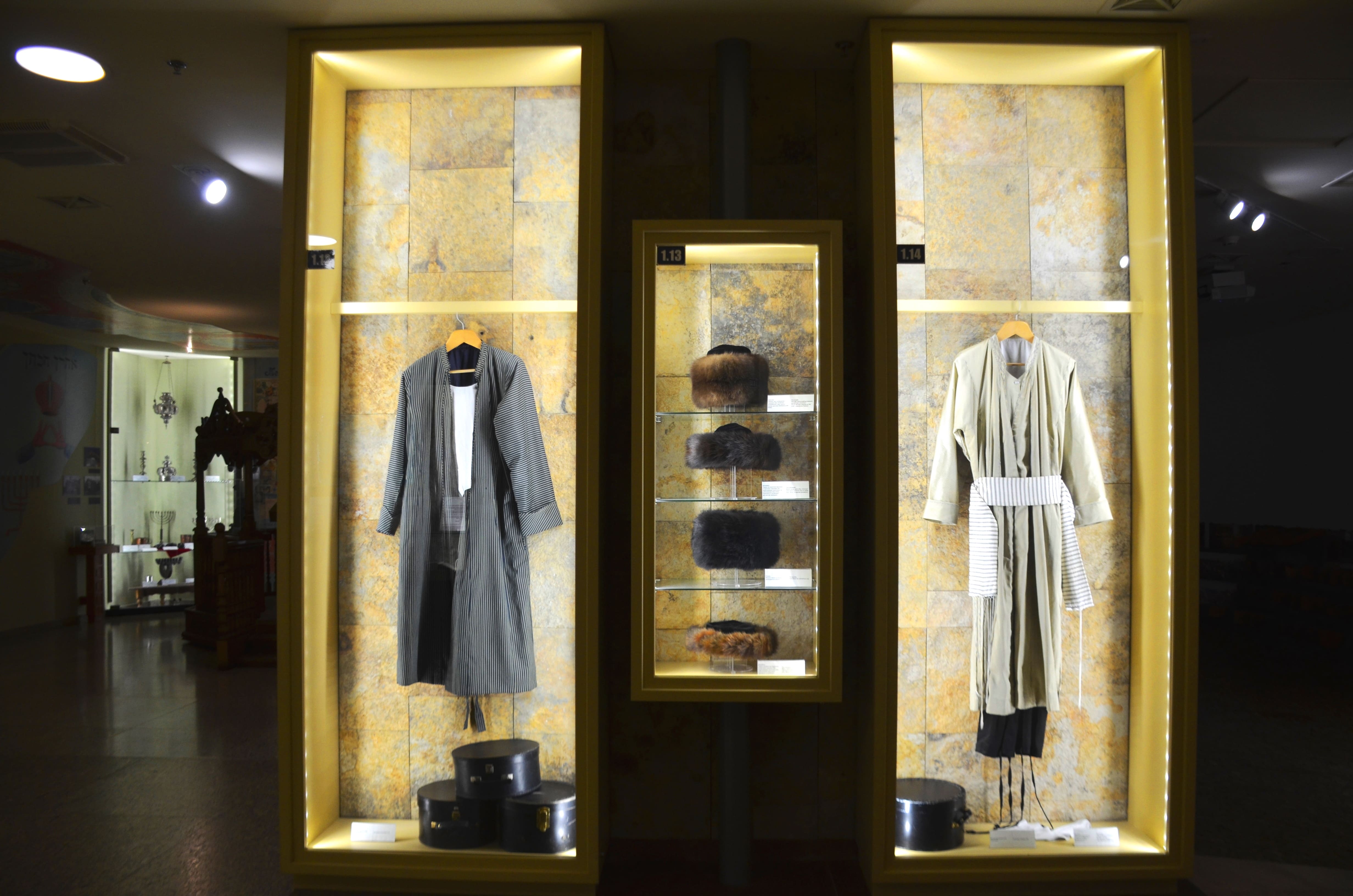Among the rarely mentioned exhibits of Museum “Jewish Memory and Holocaust in Ukraine”, it is worth noting one of the characteristic attributes of the Hasidic wardrobe – a shtreiml (a headdress with valuable fur, which is worn only on special occasions – on Saturdays, holidays, weddings or meetings with tzaddik). The museum exhibits a traditional shtreiml, a headdress made of fox fur “Chernobl” (characteristic of the Chernobyl Hasids), as well as a kolpik and a spodik.
Usually, a shtreiml is a black velvet yarmulke bordered with fox or sable tails. They are sewn from 13, and those who are more wealthy - from 18 or 26 tails.
Shtreiml is worn only by married men. In some communities, young people start wearing a fur hat from their bar mitzvah.
Shtreiml are an element of “external distinction” for representatives of various Hasidic currents. There are more than two dozen varieties of these headdresses. The traditional one has a strictly correct shape in the form of a low and wide cylinder. One of the types of shtreiml is a kolpik. Such a cap is worn on solemn events that take place on weekdays to distinguish them from Saturday. Kolpik is not made from tails, but from sable skin, and has a brown color, not black. The Jews of Poland also wore a spodik. This hat is made of cheaper fur than the shtreiml. The pods are slightly higher and narrower than the classic Shtreiml.
There is no single version of the origin of these headdresses. The most generally accepted version shows that the Jews of Eastern Europe adapted the form of headdresses of the ruling elite. This happened around the 17th century, when fur hats were common among monarchs, princes, boyars and nobles. According to other accounts, Eastern European Jews were forced to wear foxtails as a form of public humiliation, but later turned the hat into a symbol of their own pride.
Nowadays, the shtreiml continues to be part of the festive costume set in some Orthodox communities in Israel and other countries (USA, Netherlands, etc.). In everyday life, the shtreiml replaced the black hat.
Daria Yesina

